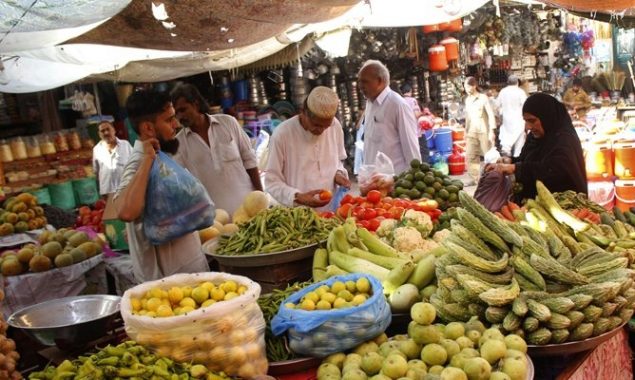
Covid, CAD and inflation to pose economic challenges Image: File
ISLAMABAD: Pakistan’s economy continues to show healthy value-added creation, while its cyclical position is largely balanced and the trend growth rate of potential output remains strong.
Although this path is expected to continue, a number of risk factors remain present at the horizon, including Covid-19, current account deficit (CAD) and inflation.
In a Finance Ministry’s Monthly Economic Update and Outlook for January 2022, it was stated that the first risk factor is the surge of the omicron variant of the Covid-19 disease.
Experience in other countries shows that this variant is far more infectious than previous variants, while its capacity to cause severe illness also looks to be impaired significantly.
It is hoped that the SARS-CoV-2 virus that caused the Covid-19 pandemic may gradually converge to other known milder respiratory diseases that can be managed without causing too much damage to peoples’ personal health and to their economic welfare.
Another risk is the stress on the external balance. Although the current account deficit (CAD) remained high, the baseline scenario remains that the excess of imports over exports will gradually ease in the coming months.
This expected tendency is enforced by the government measures designed to stimulate exports and moderate import demand. Monetary policy decisions are also supportive in this respect.
The inflation is high and year-on-year inflation is expected to remain in double digits in the coming month. The year-on-year increase in the CPI index is to a large extent a backward-looking indicator.
It is not only determined by current price movements, but also by what happened 12 months ago, when international commodity prices were at the lower areas of their current price cycles, whereas now they are at the upper levels of these cycles.
Looking forward, what matters is monitoring future month-on-month price movements. Containing these price dynamics is the most relevant issue because they will determine further developments in the consumer’s cost of living. The government measures, accompanied by the support of monetary policy, are directed to protect consumer’s purchasing power in the future.
If these future month-on-month price movements can be stabilised, the year-on-year inflation will automatically fall back to levels that are suited for supporting Pakistan’s economic development. In that sense the current surge of the year-on-year inflation rate is a temporary phenomenon.
Though economic recovery is underway, it is also confronting new Covid-19 waves, inflation and external sector pressures. The acceleration of worldwide inflation, as well as a significant increase in freight charges making international trade more costly.
Pakistan’s inflation rate is still under pressure like other countries due to the rise in international commodity prices as well as economic agents’ expectations.
CPI index in December showed a monthly decline of 0.02 per cent. Further, in January 2022, the Sensitive Price index showed a marginal decline, as a result of the government efforts to dampen the pass-through of high international prices to domestic retail markets.
But even if this would be reflected in the overall CPI index, year-on-year inflation in January 2022 may slightly increase while a decline is expected on a month-on-month basis.
The input availability will remain satisfactory for Rabi 2021/22 crops. The mechanisation and credit disbursement to agriculture show an increasing trend in fiscal year 2022, thus it is expected that in the absence of any adverse climate shock, the agriculture sector will perform better.
Industrial activity, measured by the large and small manufacturing (LSM) index is the sector which is most exposed to external conditions. The CLI of some individual countries are constructed by the OECD to reflect the deviation of current GDP from its potential level.
The LSM cycle follows the cyclical movements in the main trading partners, but since it is focused on the main industrial sectors and not on total GDP, it is somewhat more volatile than the cyclical component of GDP in Pakistan’s main export markets.
Recently, Pakistan’s main export markets have experienced stable cyclical positions. The same can be said about the recent cyclical movements of large-scale manufacturing industries in Pakistan.
Both these foreign and domestic cyclical indicators currently remain slightly above the 100 benchmarks, indicating positive to neutral output gaps. These cyclical stances however, do not keep these economies from showing positive and healthy growth in their potential outputs.
The LSM for November 2021 remained better than expected. In December 2021, the expectation is that LSM will show strong growth as compared to its level attained in November.
Read More News On
Catch all the Business News, Breaking News Event and Latest News Updates on The BOL News
Download The BOL News App to get the Daily News Update & Follow us on Google News.




